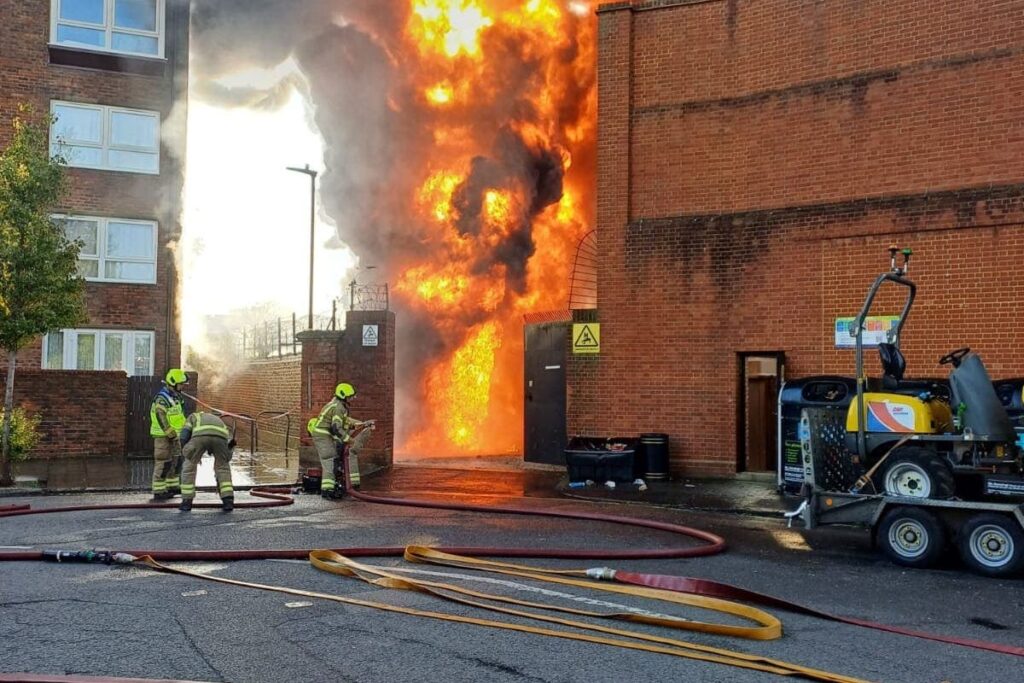There are greater than 185,000 substations within the UK, but they’ve solely grow to be commonplace in dialog since they started going up in flames.
The substation hearth epidemic has raised questions on why these outbreaks hold occurring, what they imply, and what’s going to occur sooner or later.
That is every little thing it’s best to know in regards to the latest substation fires.
A substation kinds an important a part of {the electrical} grid, performing as a switching and remodeling station for electricity. They’re chargeable for changing electrical energy into totally different voltages so it may be safely delivered to properties and companies.
Substations include switching tools, transformers, and contours out and in of the ability. Transformers work by transferring electrical power through a altering magnetic discipline to extend and reduce the voltage accordingly.
There are two various kinds of substations; some type a part of the transmission community and the others type a part of the distribution community.
Transmission stations are positioned on the level at which electrical energy enters the transmission community, for instance close to a power supply like a wind farm. In response to the National Grid, they’re the junctions “the place circuits join to at least one one other, creating the community round which electrical energy flows at excessive voltage.”
Distribution stations function at decrease voltage and route the electrical energy in order that it will possibly security enter properties and companies.
Why are there so many substation fires?
Fintan Devenney, senior power analyst at Montel Analytics, stated there’s possible nobody reply as to why there are such a lot of substation fires. Nevertheless, a typical issue could possibly be that a lot of the infrastructure is growing old. For instance, the transformer that tripped in the course of the Heathrow incident was commissioned in 1968, he says.
There’s additionally not one clear reply as to how substation fires start.
What number of substation fires have there been?
Within the final 10 weeks, there have been eight incidents of substation fires.
These fires have had severe impacts with the Heathrow substation fire inflicting outages throughout the capital, together with 66,000 properties in west London. The airport was closed for greater than a day and price round £60 to 100 million in misplaced income.
The fireplace in Huddersfield minimize off round 300 clients and resulted within the severe harm of a employee. In Nottingham, 200 properties have been left with out energy, and in Maida Vale, close by flats were forced to be evacuated the first time and the Bakerloo line was impacted the second. The substation hearth in Glasgow minimize off round 500 properties and the incident in Exeter required 25 to be evacuated and left 281 with out energy.
What triggered the substation fires?
While some have speculated that the fires have been a results of worldwide sabotage, the incidents have been attributed to tampered tools, “third celebration injury”, previous infrastructure, and “energy blips”.
What triggered the substation fires?
March 3: Lancing, West Sussex (brought on by tampered generator)
March 15: Huddersfield (well being and security investigation ongoing)
March 20: Heathrow (transformer exploded)
March 23: Nottingham (third-party injury)
April 12: Maida Vale, London (transformer exploded)
April 30: Glasgow (underneath investigation, two youngsters arrested)
Might 11: Exeter (trigger unconfirmed)
Might 12: Maida Vale, London for the second time (“energy challenge”)
Resides subsequent to a substation secure?
Issues have been voiced about substations because the very starting, however much more so now since they’ve repeatedly been on the root of the UK’s fires.
Individuals have expressed fears over publicity to electromagnetic fields generated by substations. Proof has proven there are little well being dangers brought on by electromagnetic fields beneath sure tips. For reference, electromagnetic fields generated by substations are believed to be effectively inside tips.

